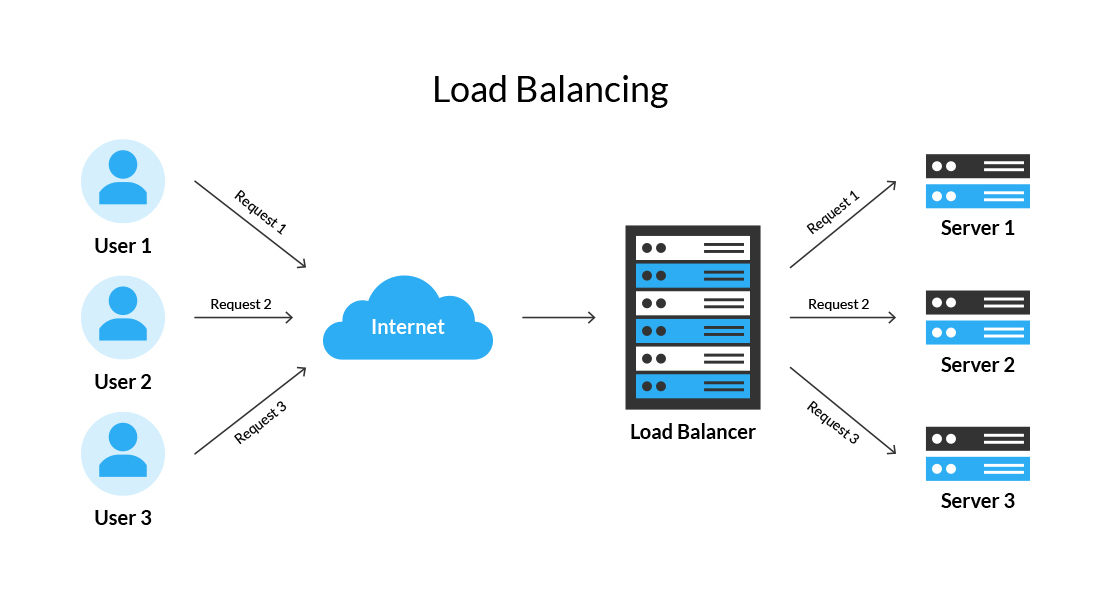How Can Servers Boost Efficiency with Load Balancing Techniques?

Servers are essential for the smooth operation of websites and applications. It gets busy when people work on it and get overloaded. This makes everything slow and annoying for you.
To overcome this issue, tech professionals use a unique method known as load balancing. Load balancing gives each server an equal amount of work. It helps to manage the traffic without slowing down. In this way, everyone gets a smooth internet experience.
Today, we'll see how servers use load-balancing techniques to boost their efficiency.
What is Load Balancing and Why Are They Important?
Servers are like the internet's brains; they hold the websites, apps, and data. Every time you access a website, your computer sends out a request for information to the server.
There are instances when too many people will request it at once. This makes the server slow or even crash down. That is when load balancing kicks in.
Load balancing divides work between several servers, typically based on robust processors such as Intel server processors. These processors are designed to manage a large workload and make sure that everything is completed efficiently.
With load balancing, the distribution of work ensures that everything runs at its best and fast.
Key Advantages of Load Balancing
Load balancing is not just about sharing work. It also brings other advantages with it:
- Decreased Response Time: Requests are handled faster by servers with fewer tasks to finish.
- No Downtime: If one server fails, others take over and keep the system running.
- Better Resource Use: It ensures that all servers get equal work to prevent overloading.
- Improved User Experience: Websites and apps load faster and work better.
All these make load balancing an important tool in keeping the internet efficient and reliable, especially when used together with powerful technologies.
The size of the global load balancer market was estimated at USD 6.26 billion in 2024 and is expected to grow at a compound annual growth rate (CAGR) of 13.40% from 2025 to 2033, from USD 7.09 billion in 2025 to USD 19.40 billion by 2033.
Now that we understand what load balancing is, let's see how it helps servers to enhance efficiency.
1. Divide the Workload Among Several Servers
Make it seem like you have a huge task that must be completed quickly. If one alone does it, it will definitely take ages, whereas if a large number of individuals split the task, it finishes faster.
So is the scenario with load balancing. It distributes the traffic portion among multiple servers to prevent any one server from becoming overloaded. Everything functions fairly quickly and smoothly when everyone shares.
- Loads website pages faster
- It reduces pressure on individual servers
- Prevents server crashes, especially during high peak hours
2. Keep the Website Up and Running at All Times
The worst thing one can experience about a website is when it falls. It is extremely annoying and results in a loss of clients as well.
Load balancing makes sure that websites are always operational, no matter what. If any server fails to work, traffic is immediately switched to another by the load balancer.
This smart switch keeps everything running without anyone noticing. It is similar to having a reliable backup plan.
- Guaranteed constant availability of websites
- Always improves user experience
- Builds visitors' trust
3. Prevent Cyberattacks on the Servers
Cyberattacks can bring down servers. Websites may crash or become inaccessible due to such an attack. Incoming traffic is distributed among several servers by load balancing, which helps the server avoid overload.
It monitors traffic for patterns that could point to an impending cyberattack and stops malicious traffic from overloading any one server. Websites and servers are protected through early detection and blocking.
This acts as a security guard, constantly defending servers from harmful activity. Servers become secure and websites continue to operate safely and smoothly as a result of load balancing.
4. Control Traffic at High Peak Hours
Think about an event that attracts thousands of people arriving all at once. Unless the organization is good enough, the scene becomes unmanageable.
The same applies to servers when a large number of users visit a website simultaneously. Load-balancing steps in to break through such crowds.
Due to traffic organization, load balancing keeps websites operating smoothly even during peak hours.
How It Works
- Users are routed to a server that is not overloaded.
- Consequently, it distributes the load to avoid crashes.
- It handles sharp traffic spikes.
5. Avoid Overheating of Servers
Servers need maintenance to operate properly, just like any other piece of equipment. An excessive workload on a single server can cause overheating, which slows down and even destroys the device.
Load balancing works by distributing the task evenly among other servers so a single server can't get heated up. Kept cool servers don't wear faster and can also last longer. This also saves companies from expensive repair or replacement.
This is comparable to how taking frequent breaks during a long workday allows one to recharge and decompress. Load balancing ensures that no single server gets overwhelmed, thus running efficiently. This improves performance and reduces costs in the long run.
6. Accelerate the Response of the Website
When you click on a website link, you expect it to load in a split second. Slow websites can be frustrating. Load balancing makes sure websites load quickly by sharing the workload. In other words, no server is too busy to respond to your request.
Fast websites are like quick delivery services. They ensure that you get what you want without waiting.
Fast Solutions to Slow Loading
- Delays are minimized
- Pages load faster
- Users are kept happy and active
In The End
Load balancing is the way of the future for apps and websites that want to give users the best possible experience. It improves the overall functionality between servers and ensures everything remains fast and efficient.
When it comes to heavy workloads, Intel server processors are more effective in making load balancing successful as they help the servers work at their maximum level.
Load balancing will become even more intelligent as technology develops. It enables companies to serve more customers and stay online even during periods of high traffic.
So, the next time you visit a website, remember that load balancing probably works in the background to make sure it loads quickly.
What's Your Reaction?

















